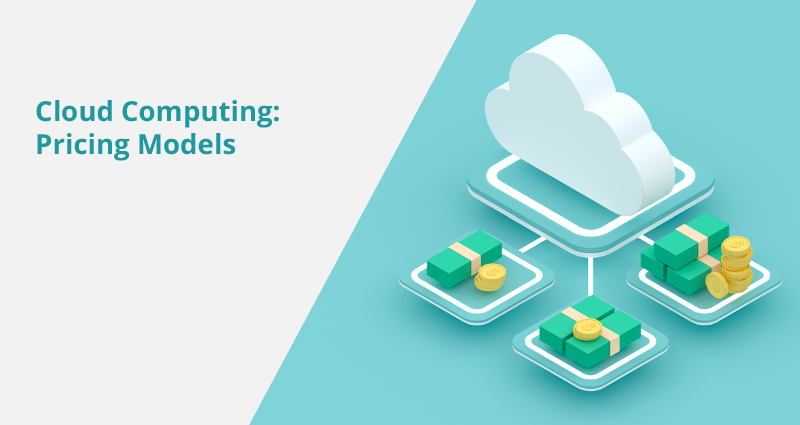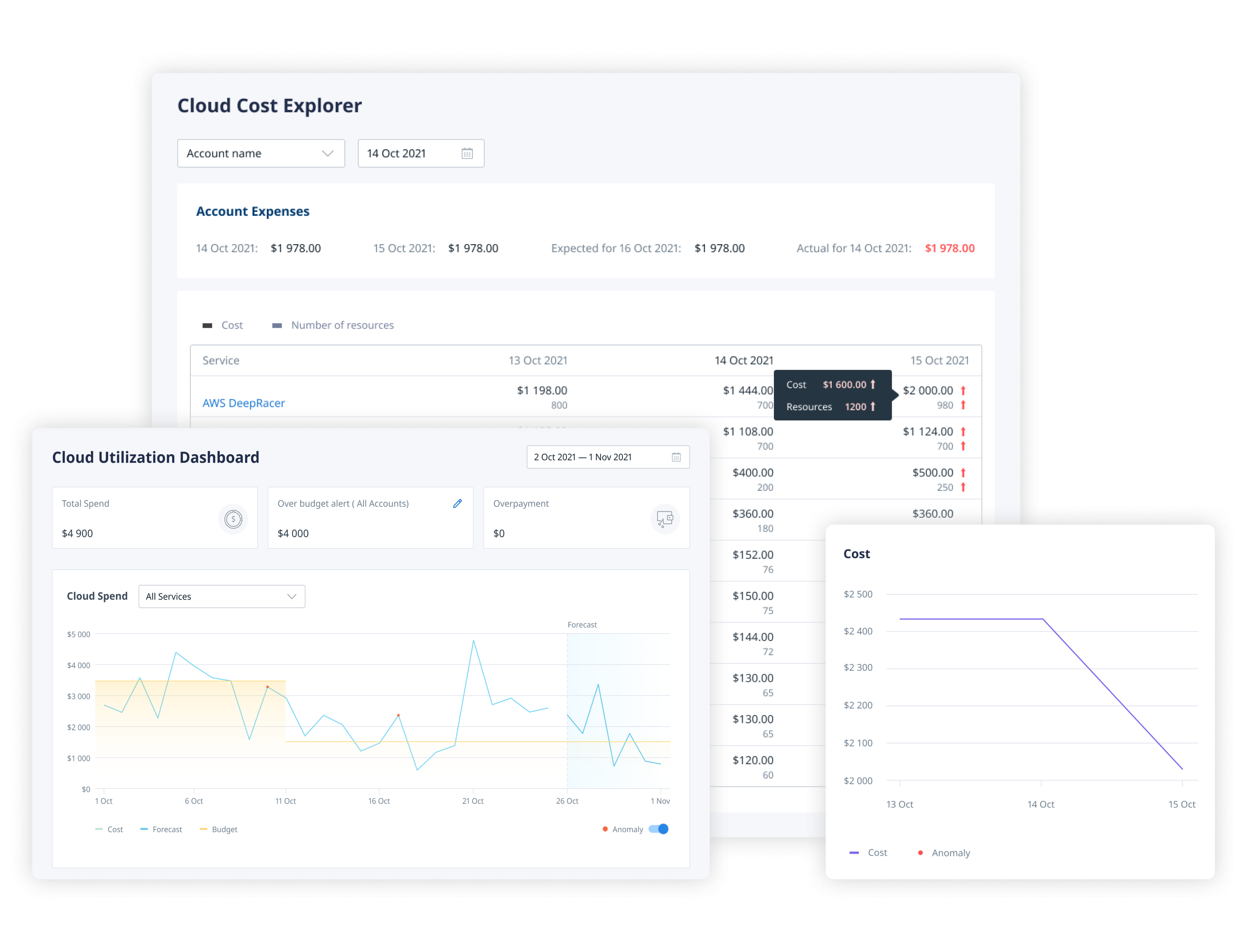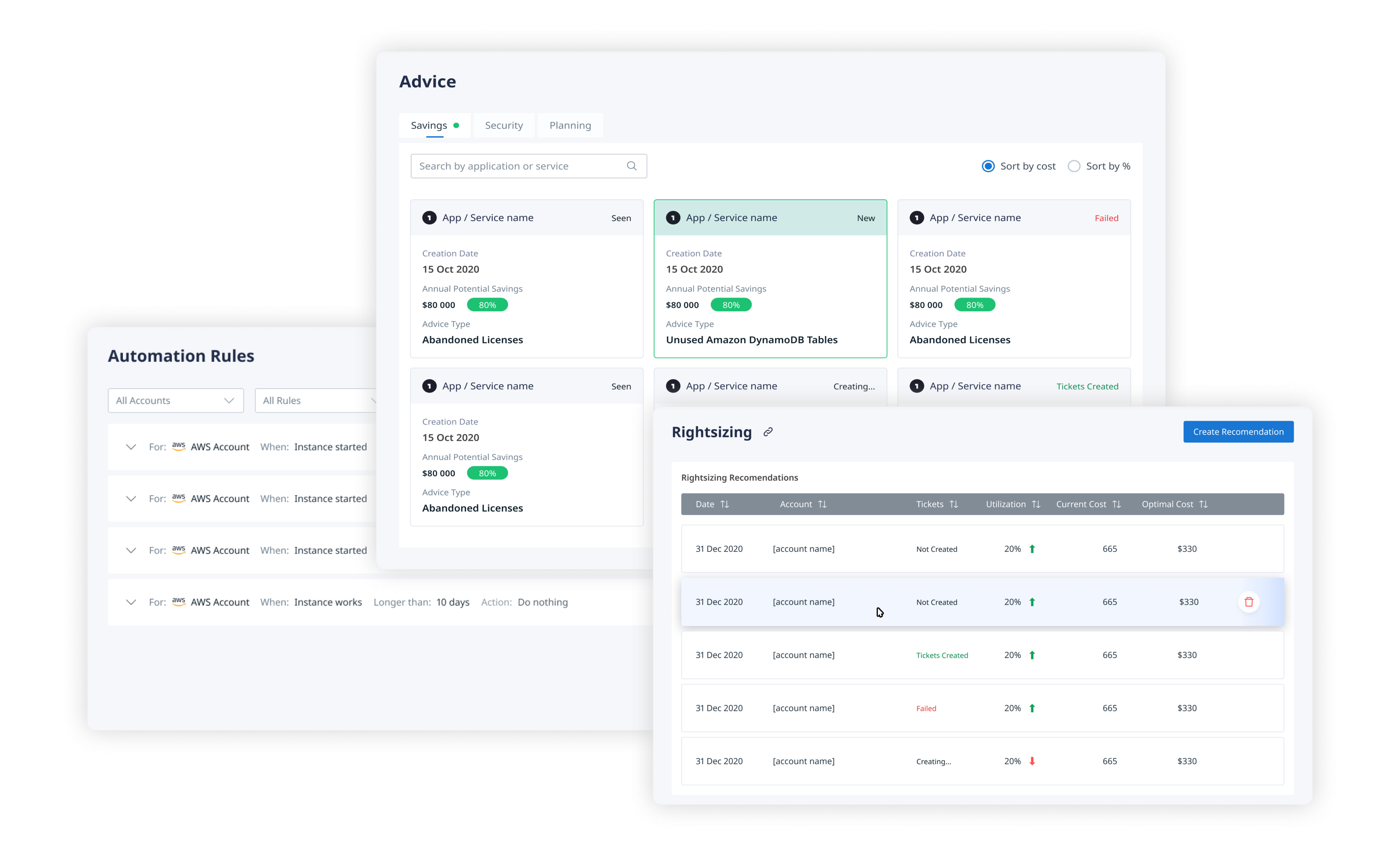Cloud Computing: Pricing Models

Even though many companies want to apply turn-key solutions and ready-to-use patterns to manage finances, it has nothing to do with the real world as no two organizations are exactly alike. Each company has its own business specifications like a demand (stable/fluctuating), spending limits, the preferable form of payment (all upfront/no upfront; on monthly/annual bases), and so on.
It is better to consider all meaningful aspects when choosing a cloud cost model, as well as take an in-depth look at various spending plans that can be sometimes confusing.
In this article, we’re going to view the most popular cloud pricing models offered by different cloud providers, discover how to choose the best one for your company and how you can optimize your cloud spending by the use of native and third-party tools.
Before we start exploring the cloud cost models in detail, let’s identify what components are considered to be a part of computing costs.
What are cloud computing components?
To properly assess, manage, and optimize cloud computing costs, organizations need to understand the factors that impact the costs, the types of assets they actually need, specify their primary objectives, create a strategic cloud cost optimization and management plan, and continuously monitor resources. In order to help companies control their costs, cloud providers offer numerous pricing models, as well as cost management and optimization tools.
It is easier to navigate in cloud costs when they are broken into physical components. Each component included in cloud architecture contributes to helping companies deploy and deliver applications and other services.
Let’s start with the first component – compute. The majority of cloud vendors offer a wide range of compute instance types. Each of them, in turn, offers a certain amount of memory, CPU resources, and so on. The companies are charged for the number and types of instances they’re deploying and the term of their usage.
The next one is networking. Mostly, customers are billed according to the volume of data transferred into the cloud service and out of it, or both of them. Additionally, there may be special charges for the network services like gateways, load balancers, etc.
One more component is storage. Cloud vendors can provide users with storage as a service. Customers pay for the actual amount of utilized storage, in the case of elastic storage services deployment. Talking about the managed storage services, for example, managed disks attached to compute instances, users pay for the entire storage volume, no matter the quantity of storage utilized.
Last but not least is virtualization. Actually, this component may be the most important one, as it separates the hardware from the IT services, which in turn enables the interaction between users and deployed cloud architecture through a graphical interface. Also, virtualization makes a single physical machine act like multiple, helping users save on numerous servers.

How to choose the right pricing model?
As you shop for cloud services, keep in mind that sometimes the best option at first glance may actually turn out to be a total waste of budget in a long run, rather than a cost-saving opportunity.
That is why it is paramount to explore your current consumption patterns and find out more trustworthy information about cloud cost management and optimization before making the final decision.
Below we collected the most popular pricing options available for cloud computing users. There you can view the peculiarities of each model offered by several cloud providers, that determine the way you’ll be charged, including the cost-saving opportunities.
1. Pay-as-you-go model
This is the most commonly used type of cloud cost model that is perfect for businesses with dynamic services. See for yourself: it’s more reasonable to pay for the actually used resources in the case of fluctuating demand.
As it may be sometimes difficult to predict the future workload, many companies choose the pay-as-you-go pricing model, without even considering the other options. It’s understandable, as no one wants to overpay for services and resources that might not be used.
We’d like to recommend you take into consideration all the available options before committing to one and only. Especially, when in certain cases the discounts offered by cloud providers can eclipse the plans which charge you based on the real-time performance.
2. Fixed upfront payments
There are several fixed or even up-front payments like Reserved Instances that provide companies with large discounts (up to 72%). It can be a great choice if you know ahead of time the level of demand your customers will generate.
Take into account that by purchasing the Reserved Instances you commit to the reserved capacity usage for the long-term (1-3 years). Although it guarantees access to a static level of services for a fixed price, with incorrect preliminary workload analysis companies can end up paying for the resources they don’t need and use.
Also, it’s vital to consider the peculiarities of the Reserved Instances provided by different cloud vendors. In one of our previous articles, we’ve discovered the outstanding features of AWS Reserved Instances. You can check Azure and GCP documentation to find out more about the RIs options they offer.
Amazon Web Services (among other cloud vendors) offer one more cost-savings opportunity represented by Savings Plans. AWS Savings Plans is a flexible pricing model which implies a one-year or three-year commitment to compute usage ($/hour). In return, AWS provides it with large discounts. It also offers three upfront payment forms: All Upfront, Partial Upfront, No Upfront payment.
Similar to AWS Reserved Instances, Savings Plans pricing provides users with discounts up to 72% off on-demand pricing. Unlike Reserved Instances, AWS Savings Plans are more flexible, companies can mix up instance sizes and types, regions, and operating systems, as they wish. The discount will be applied as long as they are spending the specified amount of computing resources.
However, in the case of overprovisioning of such instances, they cannot be sold on the AWS EC2 Reserved Instance Marketplace like RIs.
3. Dynamic pricing
There is one more cost-saving model presented by Amazon Web Services, Microsoft Azure, and Google Cloud Platform – Spot Instances. Spot Instance is a specialized instance that gives users the opportunity to access and utilize the unused EC2 or VM capacity for less than the On-Demand price.
These instances provide users with the greatest discounts of up to 90% but cannot promise reliable access. One essential factor that is worth mentioning is that Spot Instances pricing rates are not fixed – they depend on the market demand.
The thing is, vendors can reclaim the Spot Instances deployed by users at any time. In this case, users receive a Spot Instance Termination Notice notifying them that the Spot Instances will be taken in 2 minutes. That’s really not enough time to react and create a new vertical machine, so, in this case, the possibility of downtime occurrence increases. This factor should be also considered when choosing the best cloud cost model for your company.
We’ve already examined the specifications of AWS Spot Instances in our previous article. Check the peculiarities of the Microsoft Azure Spot Instances and Google Cloud Platform Spot Instances in Azure and GCP documentation, respectively.

Cloud Cost Optimization Tools
All in all, every company chooses the pricing option that meets its needs best. However, to optimize the cloud costs regardless of the selected cost model, organizations need to see what they can optimize, transform or eliminate.
Generally, there are two main types of cloud assets monitoring tools that present required visibility — native tools (provided directly by the cloud provider), and third-party tools (delivered from external vendors).
Binadox is one of third party platforms that help companies reduce their cloud cost, view the detailed information of cloud utilization patterns and occurring cost anomalies, which facilitates analytics needed for decisions making.

Additionally, there are numerous cost optimization features offered by Binadox, for instance, rightsizing recommendations, Binadox-tags created for better tag management, automation rules that reduce the manual work, and an advice section that discovers various issues like overspending or security threats.

Want to know more about Binadox cost management opportunities?
Sign up for a free trial to test Binadox cost-saving features or book a demo to find out how to organize your cloud spend and control the budget.